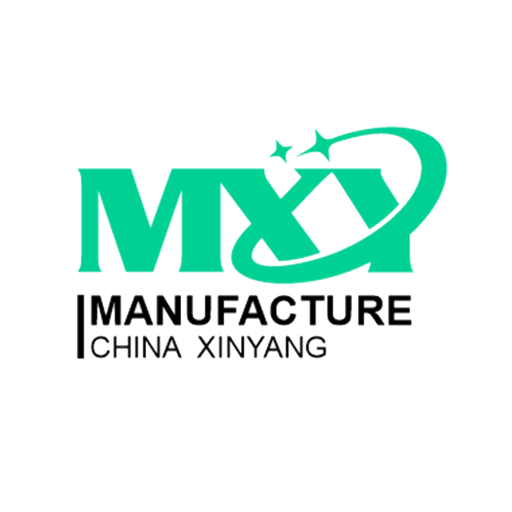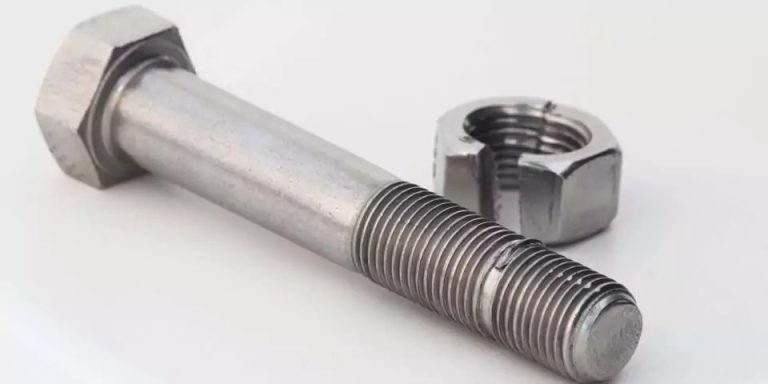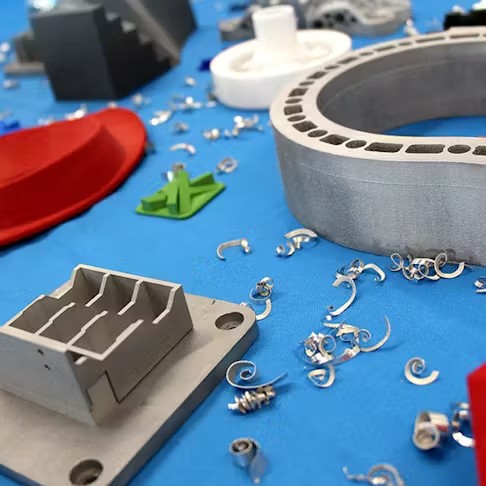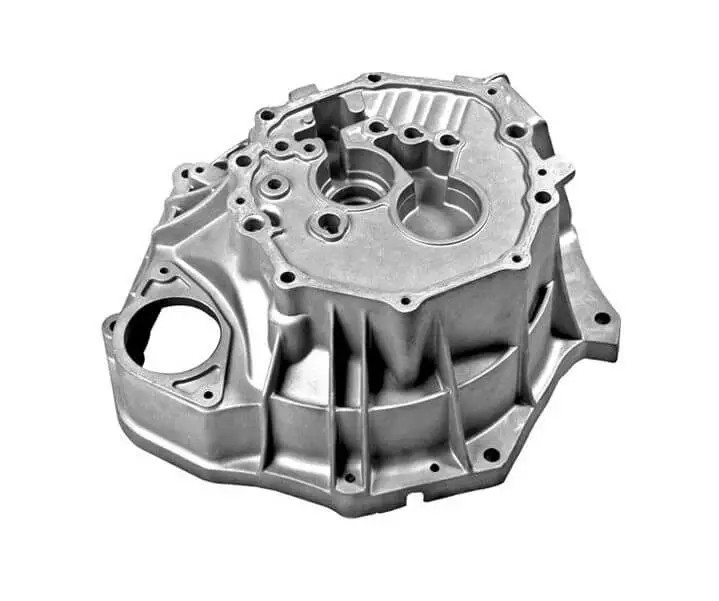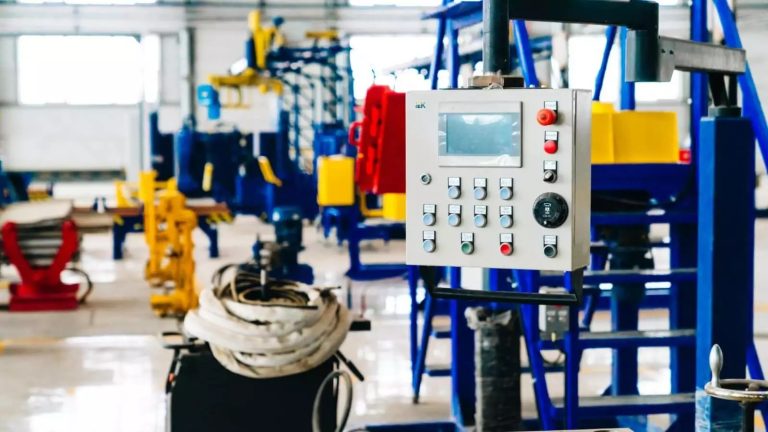
In an era where precision and efficiency are a must, small batch machining stands out as a cornerstone of modern manufacturing.
This article delves into the intricacies of small batch CNC machining, exploring its evolution, processes, and its pivotal role in today’s production landscape.
Table of Contents
What Is Small Batch Machining?

Small batch machining, a type of CNC machining, epitomizes the fusion of precision and customization.
It’s a specialized production process where small batches of components are manufactured using advanced CNC machines.
Unlike mass production, small batch CNC machining focuses on producing limited quantities, ensuring each piece meets stringent quality standards. This approach is especially beneficial for projects where customization, intricate design, and precision are paramount.
How Does Small Batch Machining Work?
At its core, small batch machining is a process that blends the latest in CNC technology with meticulous attention to detail. Here, the journey of a single component is emblematic of the synergy between human expertise and machine precision.
It begins with a design phase, where CAD (Computer-Aided Design) models are crafted. These designs are then translated into machine-readable instructions using CAM (Computer-Aided Manufacturing) software.
What Are the Different Types of Small Batch Machining Processes?
Small batch machining, a crucial subset of CNC machining services, encompasses a range of processes, each tailored to meet specific manufacturing needs. These methods, characterized by their precision and adaptability, are fundamental in crafting high-quality components in small quantities.
Let’s explore the most prominent techniques used in small batch CNC machining.
CNC Turning
CNC Turning, a fundamental process in small batch CNC machining, involves the rotation of a workpiece while a stationary cutting tool shapes it. This operation, typically carried out on CNC lathes, is integral for creating cylindrical parts with precision. In small batch production, turning plays a pivotal role due to its efficiency and accuracy.
- Custom Components: Ideal for producing tailored parts with specific dimensions.
- Material Versatility: Efficiently works with a variety of materials, including metals like aluminum and brass.
- Precision Manufacturing: Offers high accuracy for components requiring tight tolerances.
- Surface Finish: Achieves superior surface finishes, crucial for both functional and aesthetic purposes.
CNC Milling
CNC milling process, a versatile and widely-used operation in small batch machining, involves the removal of material using rotary cutting tools. CNC milling machines, characterized by their ability to move along multiple axes, enable the creation of complex shapes and features. This machining process is essential in small batch machining for its precision and flexibility.
- Complex Geometries: Capable of producing intricate shapes and detailed features.
- Rapid Prototyping: Ideal for quickly creating prototypes to test designs.
- High Customizability: Adapts easily to unique design requirements.
- Efficient Production: Offers time-saving benefits, especially for small quantities.
CNC Drilling
CNC drilling in the context of small batch machining involves creating holes or cavities in a workpiece. This process, performed using CNC drilling machines, is crucial for adding functional features like holes for screws or channels for wiring. Drilling’s precision and speed make it a valuable process in small batch CNC machining.
- Accurate Hole Placement: Ensures precise positioning of holes, essential for component functionality.
- Depth Control: Allows for accurate depth specification, crucial for various applications.
- Material Compatibility: Efficiently works with a range of materials, from plastics to hardened metals.
- Customization Flexibility: Adapts to different hole sizes and patterns, essential for tailored projects.
EDM Machining (Sinker and Wire)
Electrical Discharge Machining (EDM), both sinker and wire types, is a specialized process employed in small batch production. EDM utilizes electrical sparks to erode material, making it ideal for working with hard metals and intricate designs. The process involves machines equipped with electrodes (in sinker EDM) or thin wires (in wire EDM) to achieve precise cuts and shapes.
- Complex Shapes and Fine Details: Perfect for producing intricate designs that are challenging for traditional machining methods.
- Hard Material Machining: Efficiently works with materials like titanium and hardened steel, which are tough for other machining processes.
- Minimal Surface Impact: Preserves the integrity of the workpiece, ensuring excellent surface finish.
- Precision Slots and Cavities: Ideal for creating accurate slots, cavities, and complex 3D shapes.
Surface Grinding
Surface grinding, a process integral to achieving fine finishes and precise flatness, is another key component of small batch CNC machining. This operation uses a rotating abrasive wheel to smooth the surface of a workpiece. Precision surface grinders are employed to ensure uniformity and accuracy in the final product.
- Superior Surface Finish: Essential for projects where surface smoothness is a critical attribute.
- Tight Tolerance Achievement: Delivers high precision in terms of flatness and thickness.
- Material Versatility: Effective on a wide range of materials, from metals to plastics.
- Custom Tooling and Fixtures: Allows for the creation of specialized tooling and fixtures with precise surface requirements.
Multi-Axis Machining (3-Axis, 4-Axis, 5-Axis)
Multi-axis machining, which includes 3-axis, 4-axis, and 5-axis machining, represents the pinnacle of versatility and precision in small batch CNC machining. These machines are capable of moving a tool or a workpiece in multiple directions simultaneously, allowing for the creation of complex geometries with high precision.
- Complex 3D Geometries: Ideal for parts with intricate designs and contours that require multi-dimensional machining.
- Reduced Setup Time: Multi-axis capability minimizes the need for multiple setups, enhancing efficiency.
- High Precision and Consistency: Ensures consistent quality across small batches, crucial for industries like aerospace and medical devices.
- Optimized Material Utilization: Efficiently uses material, reducing waste and lowering unit costs.
What Materials Are Commonly Used in Small Batch CNC Machining?

In small batch CNC machining, the choice of material is as crucial as the machining process itself. The materials used must align with the project’s requirements regarding strength, durability, and precision.
In small batch production, a diverse array of materials is employed, each offering unique advantages. Let’s explore the most common materials used in small batch CNC machining and why they are chosen.
- Aluminum: Known for its lightweight and strength, aluminum is a popular choice in aerospace and automotive industries. Its ease of machining and good thermal conductivity make it suitable for various applications.
- Stainless Steel: Favoured for its corrosion resistance and strength, stainless steel is widely used in medical devices and food processing equipment. It maintains integrity under high temperatures and harsh conditions.
- Brass: Brass is chosen for its aesthetic appeal and machinability. Common in decorative and electrical components, it offers good corrosion resistance and electrical conductivity.
- Titanium: With its high strength-to-weight ratio and corrosion resistance, titanium is ideal for aerospace and medical applications. It’s challenging to machine but offers superior durability.
- Copper: Used for its excellent electrical conductivity, copper is a primary material for electronic components. It’s also chosen for its thermal conductivity in heat exchangers.
- Plastics (like ABS and PEEK): Plastics are used for their versatility, lightweight, and corrosion resistance. ABS is common in prototyping, while PEEK is used in high-temperature applications.
- Tool Steel: Tool steel is employed for its hardness and ability to hold a cutting edge. It’s typically used in the production of tooling and molds.
- Carbon Steel: Offering a balance of durability and machinability, carbon steel is used in general manufacturing and automotive industries.
- Nickel Alloys: These are chosen for their high-temperature and corrosion-resistant properties, making them suitable for harsh environments like chemical plants.
- Tungsten: Known for its high density and melting point, tungsten is used in applications requiring extreme heat resistance, such as in aerospace and military.
What Are the Applications and Industries Utilizing Small Batch Machining?
Small batch CNC machining is a critical component in various industries, playing a key role in the production of high-quality, precision components.
Its versatility allows it to cater to a wide range of applications, from aerospace to custom electronics.
Let’s explore some of the primary industries and applications that benefit from small CNC batch machining:
- Aerospace Industry: Precision is paramount in aerospace, and small batch machining provides components like turbine blades and landing gear parts. Reliability and adherence to strict tolerances are crucial in this sector.
- Medical Devices: Small batch production is ideal for creating high-precision, custom medical devices such as implants and surgical tools, where quality and accuracy are vital.
- Automotive Industry: Prototyping and production of custom parts like gears and engine components benefit from small batch CNC machining’s precision and flexibility.
- Electronics Industry: In electronics, small batch machining is used for creating intricate parts like custom storage racks and electronic enclosures, where precision and surface finish are critical.
- Defense and Military: For the defense sector, small batch CNC machining is essential for producing specialized, high-strength components that meet stringent safety and quality standards.
- Industrial Machinery: Small batch machining contributes to the creation of custom machine parts, jigs, and fixtures, enhancing the efficiency and performance of industrial machinery.
- Consumer Products: From custom kitchenware to sports equipment, small batch CNC machining allows for the creation of unique, high-quality consumer goods.
- Prototyping and R&D: For research and development, small batch machining is invaluable in prototyping, allowing for rapid testing and development of new designs.
- Energy Sector: In energy, especially in renewable sources like wind and solar, small batch machining is used for producing specialized components such as brackets and mounting systems.
- Telecommunications: Small batch CNC machining aids in manufacturing components for telecommunications infrastructure, including custom fittings and enclosures.
What are the Advantages & Disadvantages of Small Batch Machining?
Balancing the demands for quality, flexibility, and efficiency small batch CNC machining it offers significant benefits, it’s also important to recognize its limitations. Understanding both sides of this approach can help you make informed decisions about its applicability to your projects.
Advantages of Small Batch Machining
- Better and Higher Productivity Rate: Small batch machining allows for quicker turnaround times, enhancing productivity especially for projects requiring rapid prototyping or urgent deliveries.
- Controlled Costs and Expenses: It offers cost-effective solutions for producing small quantities, avoiding the higher expenses associated with large-scale production setups.
- Highly Accurate and Precise: The use of advanced CNC machines ensures that each part is manufactured with high precision and consistency.
- Faster Time to Market: The efficiency of small batch CNC machining means products can be developed and launched faster, giving businesses a competitive edge.
- Conditioned Equipment and Machinery: Small batch setups often involve well-maintained and regularly calibrated machines, ensuring high-quality output.
- Small-scale Production: Ideal for businesses that require limited quantities of a product, avoiding the wastage and storage issues associated with mass production.
- Flexibility: It allows for easy modifications and adjustments, making it perfect for custom and specialized projects.
- Less Material Wastage: Efficient use of materials is a key feature, with less wastage compared to larger production runs.
Does Small Batch Machining have any disadvantages?
- Higher Unit Cost: Producing smaller quantities can lead to higher per-unit costs compared to mass production.
- Limited Economies of Scale: The cost savings associated with large-scale production are not as pronounced in small batch CNC machining.
- Dependency on Skilled Labor: Requires a higher level of expertise and skilled operators, which can be a challenge to find.
- Potential for Inconsistencies: Although rare, manual aspects of setup and changeovers can lead to slight inconsistencies in very small runs.
What Is the Cost Aspect of Small Batch Machining?
Understanding the cost dynamics of small batch machining is crucial for making informed decisions in manufacturing.
While it offers flexibility and precision, the cost is influenced by several factors, making it a complex but essential aspect to consider.
- Complexity of Parts: The more complex the design, the more time and resources are required, increasing the cost.
- Material Choice: Different materials have varying costs. High-quality materials like titanium or specialized plastics can drive up the price.
- Machining Time: Longer machining times, necessary for intricate designs or harder materials, result in higher costs.
- Tooling and Setup: Custom tooling and the time required for machine setup can add to the overall expense, especially for unique or intricate designs.
- Quantity of Production: Smaller quantities often mean higher per-unit costs due to the setup and tooling being spread over fewer parts.
- Labor Costs: Skilled labor is essential for small batch machining, and the cost of experienced machinists can impact the overall expense.
- Quality Control and Testing: Rigorous quality checks and testing procedures, crucial for high-precision parts, can add to the cost.
What are some Design Tips for Small Batch Machining?

Designing for small batch machining requires a balance between functionality, quality, and cost-efficiency. Here are some tips to optimize your design:
- Simplify Designs Where Possible: Reducing complexity can lower machining time and costs.
- Standardize Components: Using standard sizes and features can reduce the need for custom tooling.
- Optimize for Machining: Design parts with the machining process in mind to minimize the need for complex setups or tool changes.
- Material Selection: Choose materials that are easy to machine yet meet the product requirements.
- Consider Tolerances: Tight tolerances increase machining time and costs, so only specify tight tolerances where functionally necessary.
- Modular Design: Designing parts to be modular can simplify machining and assembly processes.
Conclusion
Small batch machining stands out as a highly adaptable and precise manufacturing process. It’s particularly beneficial for specialized projects, prototypes, and low-volume production. While there are cost considerations unique to this approach, understanding and optimizing the factors influencing these costs can lead to efficient and economical production. Balancing design complexity, material selection, and production planning are key to harnessing the full potential of small batch CNC machining.
As a leading provider of CNC machining services and parts,XinYang offers small-batch CNC machining as well. With 60+ cutting-edge CNC machines in-house, we are able to achieve tolerances as tight as ±0.01 mm and delivery in as little as 5 days.
Every single part or prototype we produce undergoes rigorous inspection and quality control tests so we can make sure that you will receive a top-notch product. Your parts will be manufactured and inspected with our advanced in-house equipment, including HAAS 3-, 4-, and 5-axis CNC milling, Hexagon CMM, and Olympus XRF analyzer

